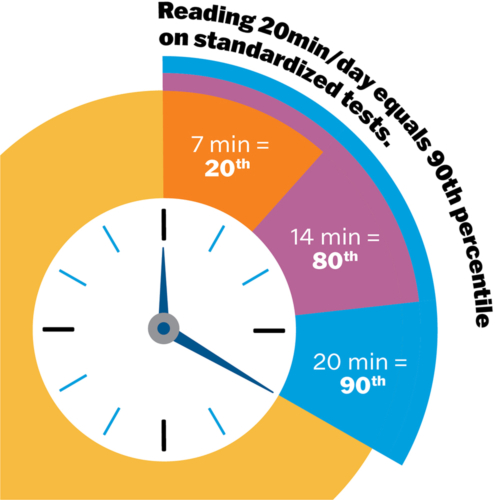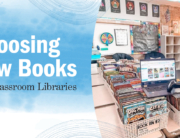As you prepare for the new school year, we know you’re facing new and unique challenges. From supporting students’ mental health to addressing learning recovery for in-person and remote learners, books and reading are powerful solutions that offer benefits for students and educators alike.
Reading more boosts achievement

It’s no secret that students need to be surrounded by amazing books to promote the daily reading practice that builds lifelong skills. In fact, research indicates a correlation between time spent reading and performance on standardized tests!
According to one study, students who read just seven minutes per day score in the 20th percentile, while students who read just 20 minutes a day score in the 90th percentile on standardized tests. In addition, reading 20 minutes a day exposes kids to a vast quantity of words (1.8 million in each school year) which can positively affect children’s overall academic success.
Reading builds community

Since students haven’t been in the classroom for the summer (and maybe longer), the first days and weeks of school are important for teachers and students to get to know each other. Starting the year by building a classroom community can set the tone for the rest of the year, and read alouds are a great way to make that happen.
The beginning of this year in particular will be filled with so many emotions and connecting to characters in a book can help students deal with those emotions. Read alouds and picture books can enhance classroom community through the conversations they spark and create a safe space for classroom discussions.
SEL & mental health

Teachers and students are exhausted by remote learning, the stress of the pandemic and the uncertainty of life in the modern world. When students can’t manage their emotions or are unable to approach learning while feeling safe and cared for, they can’t engage in the learning process.
Fortunately, books are an amazing resource for facilitating difficult conversations, modeling coping skills and giving students time to relax and de-stress through reading. Any time students are feeling uncertain, scared, sad or anxious, one of the best things a teacher can do is stop, talk and share a book.
In fact, research demonstrates that the act of reading contributes to health and well-being. Even six minutes of reading can lower the heart rate and ease muscle tension, and consistent engagement in reading can reduce feeling of stress by 68% (exceeding activities like listening to music or taking a walk and is 700% more effective than playing video games). Reading can positively impact the mental and emotional health of students.
Learning recovery

The most effective learning is fun and engaging. However, in the push to address learning recovery, it might easily become a secondary consideration. If academic programs forget to keep students engaged in learning, we may make the situation worse.
Books offer an easy way for students to re-enter academic learning in a nonthreatening manner. Begin each class by reading aloud students’ favorite books and encouraging discussion. Take time in the day for independent reading and allow students to choose books from your classroom library. Guide struggling readers to high/low book selections.
You’ve got the funds!

Did you know that schools and districts who receive federal funding can spend these funds to purchase books for home or school?
According to the U.S. Department of Education, the American Rescue Plan (ARP) Elementary and Secondary School Emergency Relief (ESSER) funding of nearly $122 billion has been made available to support efforts to reopen schools safely and equitably expand opportunity for students who need it most.
The ARP ESSER funds may be used to address the many impacts of COVID-19 on PreK-12 education, including implementing strategies to meet the social, emotional, mental health and academic needs of students hit hardest by the pandemic.
How do you use books in your classroom at the beginning of the school year? Share your tips in the comments below.




Leave A Comment